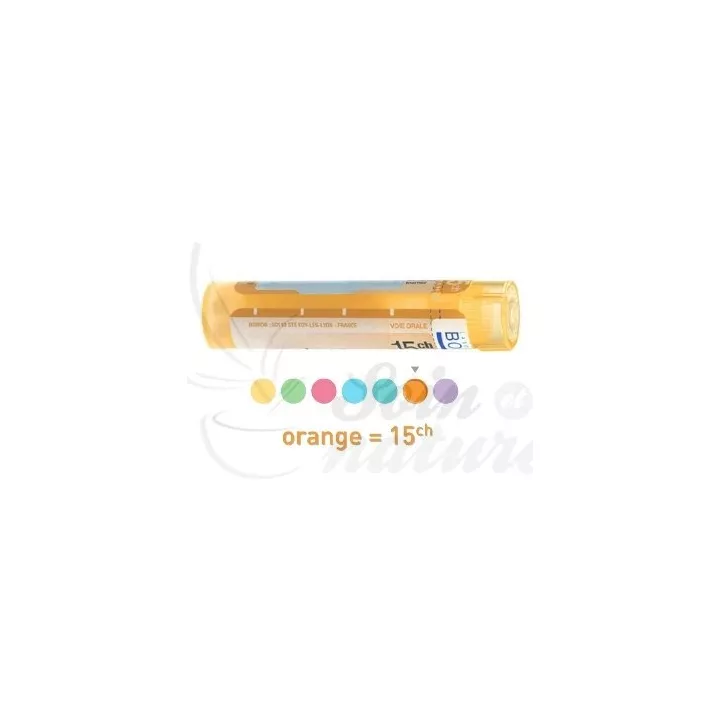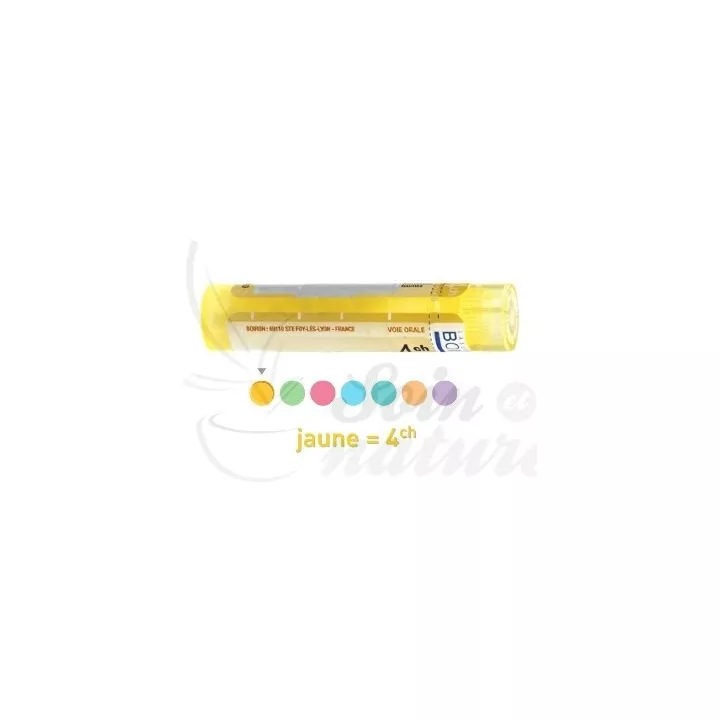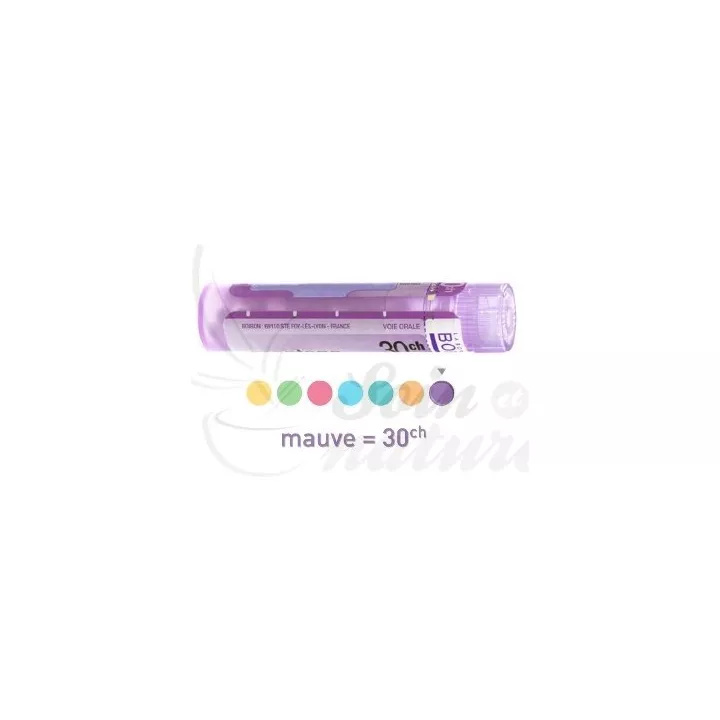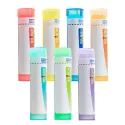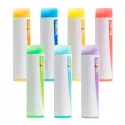Phytolacca Decandra Boiron: Homeopathy for ENT, Gynecology, Rheumatology and Pediatrics
Registered medicine: EH00841
Origin: Vegetal
The world of natural medicine is full of priceless treasures, including Phytolacca Decandra. Derived from Indian spinach, this little-known North American plant stands proudly in the Phytolaccaceae family. It is one of nature's enigmas, presenting both toxic potential and unparalleled curative virtues, once transformed into a homeopathic remedy.
Discover Phytolacca Decandra by Boiron, a homeopathic remedy to relieve ENT, gynecological, infectious, rheumatological and pediatric ailments. Take advantage of a natural approach to improve your health and well-being.
Origins and Composition
Phytolacca Decandra is more than just a plant; it's an ally for those seeking natural therapeutic solutions to their ailments. Native to North America, this perennial plant is characterized by its medium-sized leaves and black fruits, the juice of which is toxic in its natural state. However, what might be perceived as a danger actually conceals a powerful therapeutic potential.
The transformation of this plant into a medicine is a painstaking process that eliminates any toxicity, making Phytolacca Decandra a safe homeopathic remedy. This metamorphosis underlines the importance of knowledge and technique in exploiting natural resources for human well-being.
Phytolacca Decandra has proven to be a valuable ally in the treatment of a wide range of ailments. Its field of action is vast, ranging from ENT diseases to gynaecological disorders. It's a natural solution to a multitude of health problems, without the drawbacks of conventional medicines.
Natural Remedy for Gynecological Disorders
A Solution for Menstrual Disorders
Phytolacca Decandra is the treatment of choice for women with painful, irregular periods or premenstrual symptoms (PMS) such as swollen breasts, migraines, nausea and nervousness. A dosage of 3 granules of Phytolacca Decandra 5CH is recommended, morning and evening, from the onset of symptoms until they subside. For persistent cases, a combination with other remedies, such as Natrum sulfuricum or Lachesis Muta, may be considered.
An ally for breastfeeding women
The challenges of breastfeeding, such as hard, sore breasts or cracked nipples, also find comfort and relief with Phytolacca Decandra. This remedy is also indicated for the treatment of ovarian inflammation, offering a range of solutions for women at different stages of their life cycle.
Phytolacca Decandra is a powerful ally in the treatment of a wide range of ailments. Its scope of action is vast, ranging from ENT diseases to gynaecological disorders. It's a natural solution to a multitude of health problems, without the drawbacks of conventional drugs.
Chronic rheumatism and skin disorders
People suffering from chronic rheumatism or various skin infections will also find refuge in the properties of Phytolacca Decandra. Its ability to relieve pain and combat inflammation makes it a valuable tool in the management of these painful conditions.
Muscle and bone pain relief
Chronic rheumatism, characterized by persistent, debilitating pain, finds Phytolacca Decandra a powerful ally. Taking 5 granules of Phytolacca Decandra 9CH daily is a therapeutic approach designed to reduce the intensity of muscular pain and improve patients' quality of life.
An ally for mothers and children
Particularly beneficial for disorders related to the mammary glands, Phytolacca Decandra is also a boon for young mothers and their children. It effectively treats breast infections, soothes teething pains in little ones, and offers invaluable support during the delicate periods of motherhood and growth.
Treatment of Mammary Abscesses and More
Phytolacca Decandra is also a leading homeopathic solution for the treatment of infections, particularly breast abscesses, with or without suppuration. For these cases, Phytolacca Decandra 5CH, taken three times a day, is recommended. This remedy is also effective against other infectious diseases such as diphtheria, nephritis, herpes and influenza, among others. Influenza, for example, can be treated with Phytolacca Decandra 7CH or 9CH, depending on the presence of fever, in two or three doses a day.
Relief of teething and other childhood disorders
Phytolacca Decandra plays a crucial role in relieving teething discomfort in young children. Administering a dose of Phytolacca Decandra 15CH before dinner can help alleviate pain. For more intense pain, a dose of 5 granules of Phytolacca Decandra 9CH three times a day is recommended. This homeopathic medicine is also useful for treating fever in children, characterized by chills and aches, and for stimulating lactation in nursing mothers.
Indications and dosage
Homeopathic medicines can be used to treat a wide range of symptoms. The homeopathic physician selects the dilution and dosage appropriate to the patient's state of health and characteristic symptoms.
Phytolacca Decandra: Versatile homeopathic support
Phytolacca is particularly indicated for the treatment of red angina. Symptoms include pain on swallowing, dark red tonsils and dry mucous membranes.
A Natural Solution for O.R.L. Conditions: Phytolacca decandra by Boiron is a homeopathic remedy of choice for treating a variety of O.R.L. conditions, including follicular pharyngitis, gingivitis, and angina accompanied by dry cough. Its effectiveness also extends to patients suffering from tonsillitis, bronchitis and adenitis, offering natural relief and valuable help in managing symptoms, thanks to its anti-inflammatory and analgesic properties.
Benefits in Gynecology and Infectiology
Phytolacca is also useful for treating premenstrual breast tension and congestion, as well as indurated nodes in the breasts.
Soothing feminine and infectious disorders: In gynecology, Phytolacca decandra plays a key role in relieving painful periods, menstrual imbalances and premenstrual syndromes such as breast swelling, migraines, nausea and nervousness. It is also effective against breast abscesses, stomatitis, herpes, prostatitis, flu and eczema, thanks to its antiviral and anti-inflammatory properties, providing a gentle response to infections and inflammations.
Support in rheumatology and pediatrics
It is also used to alleviate muscular pain, including aches and pains, neuralgia such as lumbago, and joint and bone pain, particularly during wet and cold spells.
Relief of rheumatic and pediatric pain: Phytolacca decandra is also a major ally in the treatment of chronic rheumatic and muscular pain, as well as in the management of teething discomfort in children. It helps reduce teething-related pain and soothes children's desire to bite or chew, promoting general well-being during these delicate periods.
Dosage protocols
For Red Angina
Phytolacca 5 CH is recommended, 3 to 5 granules every 2 hours. The doses should be spaced out according to the improvement observed.
For muscle and joint pain
3 to 5 granules can be taken as soon as pain appears, followed by 3 to 5 granules morning and evening until symptoms subside.
How to use Phytolacca decandra and instructions for use
- Twist the Phytolacca decandra tube to drop the desired number of granules into the cap, then place the granules under the tongue.
- Do not touch the homeopathic granules with your fingers.
- The globules in single-dose tubes are absorbed in one go, dissolving slowly under the tongue. If no dose is available, take 10 granules of the same dilution.
- These dosages are given as a guide and may vary according to the nature of the drug and the clinical context.
- Use a mint-free toothpaste (such as Homéodent Boiron, which is compatible with homeopathic granules).
How to use Phytolacca decandra by Boiron?
We recommend that you follow the dosage instructions on the packaging or those of your healthcare professional, taking into account the dilution chosen for use in your specific condition.
Does Phytolacca decandra have any side effects?
This homeopathic remedy is generally well tolerated. In case of doubt or unusual reaction, it is advisable to consult a health professional.
When can I expect to see an improvement in my symptoms?
Effectiveness may vary according to the individual and the nature of the symptoms. Regular use in accordance with recommendations is crucial to observe an improvement.
Packaging and contents
Phytolacca Decandra, also known as American berry, is a plant with multiple therapeutic properties, listed in the French and European Pharmacopoeia and registered under number EH00841. This plant-based remedy is available in homeopathic doses, tubes and magistral preparations, including Korsakovian dilutions, covering a wide range of dilutions to meet a variety of treatment needs.
Origin and properties
Phytolacca, commonly known as American grape, is a herbaceous plant found mainly in North America and France. The plant is characterized by its large, oval leaves and white or pinkish flowers, arranged in cylindrical clusters. The mother tincture used in homeopathy is made from the whole plant, picked fresh.
Phytolacca Decandra is traditionally used for its effects on the lymphatic system, glandular affections and musculoskeletal disorders. In homeopathy, it is particularly appreciated for its ability to treat throat infections, muscular pains and breastfeeding problems in women.
Available formulations
Doses and Tubes: Phytolacca Decandra is available in doses from 5 CH to 30 CH and granulated tubes from 4 CH to 30 CH and 8 DH, allowing precise use according to the patient's symptoms and sensitivity.
Magistral preparations: For finer adjustment of treatment, Phytolacca Decandra can be prepared in Hahnemannian dilutions from 4 CH and in Korsakovian dilutions (200K, 1,000K, 10,000K). This option enables the remedy to be tailored to the specific needs of each individual.
Therapeutic applications
Phytolacca Decandra is often recommended for :
- Treating angina and sore throats, thanks to its anti-inflammatory and analgesic action.
- Relieving muscle and joint pain, especially when associated with stiffness and swelling.
- Help treat breastfeeding-related problems such as breast engorgement and mastitis, promoting rapid and effective resolution of these conditions.
Associated pathologies and treatment with Phytolacca Decandra
Phytolacca Decandra 's spectrum of action covers a wide range of pathologies, underlining its importance in the homeopathic pharmacopoeia. It is associated with the treatment of conditions such as:
- Breastfeeding : Helps manage difficulties associated with breastfeeding, such as lack of milk.
- Angina: Used to treat inflammation of the throat.
- Arthralgia: Relieves joint pain.
- Influenza and flu syndrome: Effective against flu symptoms.
- Mastosis: Used to treat pain and disorders of breast tissue.
- Infectious mononucleosis, parotitis, pharyngitis: Treats these infections with notable effectiveness.
- Poussée Dentaire: Reduces teething discomfort in young children.
Phytolacca Decandra is thus confirmed as a pillar of homeopathic medicine, thanks to its ability to address a variety of health disorders with a gentle, natural approach, making this remedy indispensable in the treatment of rheumatism, infections and pediatric care.
A powerful ally against mammary gland disorders and beyond.
Precautions for use
Warning
Contains sacchararose. Keep homeopathic medicines away from light, heat and moisture.
Giving homeopathic granules to babies and children
Phytolacca decandra homeopathic granules should be dissolved in 100ml of water. As the granules take a very long time to dissolve, you'll need to prepare your mixture in advance.
Homeopathy and pregnancy
Phytolacca decandra homeopathic medicines have no chemical toxicity, no contraindications, no interaction with other medicines, and no adverse effects linked to the quantity of product ingested. Pregnant women can use them without any known risk to themselves or their unborn child, but it is preferable to seek advice.
Frequency of homeopathic use
For acute conditions, Phytolacca decandra homeopathic remedies should be taken every hour until symptoms improve. From then on, take them 3 or 4 times a day, spacing them out, then stop gradually.
For chronic conditions, low-dilution remedies (Phytolacca decandra > to 9CH) should be taken 1 to 2 times a day, while long-acting remedies should be taken once a week, or even once a month. This decision is left to the homeopath.
What to do if there is no improvement within 24 hours
Certain pathologies cannot be treated with Phytolacca decandra homeopathy by simple self-medication. Your doctor will decide whether your condition can be treated with homeopathy alone, or whether your treatment needs to be supplemented with allopathic medicines.

